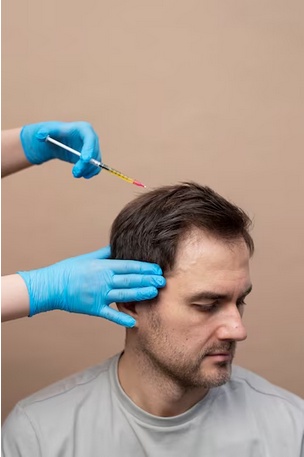Introduction:
Hair loss is a prevalent concern that affects individuals of all ages, genders, and backgrounds. While it is a natural part of the aging process, various factors can contribute to accelerated or excessive hair loss. In this comprehensive guide, we will explore the causes of hair loss, debunk common myths surrounding this issue, and delve into effective solutions to address and manage hair loss.
Understanding the Causes of Hair Loss:
-
Genetics (Androgenetic Alopecia): One of the most common causes of hair loss is androgenetic alopecia, commonly known as male-pattern baldness or female-pattern baldness. It is a hereditary condition that leads to hair thinning and eventual loss. Genetics play a crucial role in determining the susceptibility to androgenetic alopecia.
-
Hormonal Changes: Hormonal fluctuations, such as those occurring during pregnancy, childbirth, menopause, and conditions like polycystic ovary syndrome (PCOS), can contribute to hair loss. Imbalances in hormones, particularly dihydrotestosterone (DHT), can affect the growth cycle of hair follicles.
-
Medical Conditions and Treatments: Various medical conditions, including thyroid disorders, autoimmune diseases, and certain cancers, can cause hair loss. Additionally, treatments like chemotherapy and radiation therapy can result in temporary or permanent hair loss.
-
Nutritional Deficiencies: Inadequate nutrition, particularly deficiencies in iron, zinc, vitamins (especially vitamin D and B vitamins), and proteins, can impact the health of hair follicles. A well-balanced diet is essential for maintaining healthy hair.
-
Stress and Emotional Factors: High levels of stress, anxiety, and emotional trauma can contribute to hair loss. The condition known as telogen effluvium involves a sudden shedding of hair, often triggered by significant stressors or life events.
-
Tight Hairstyles and Traction Alopecia: Constantly wearing tight hairstyles or using hair accessories that pull on the hair can lead to a type of hair loss called traction alopecia. Over time, this stress on the hair follicles can result in permanent damage.
Common Myths About Hair Loss:
-
Myth: Only Men Experience Hair Loss: Fact: Hair loss affects both men and women. While male-pattern baldness is more commonly associated with men, women can also experience thinning hair and baldness, especially during hormonal changes.
-
Myth: Frequent Shampooing Causes Hair Loss: Fact: Washing your hair regularly does not cause hair loss. In fact, maintaining a clean and healthy scalp can contribute to overall hair health. The key is to use a gentle shampoo suitable for your hair type.
-
Myth: Wearing Hats Causes Baldness: Fact: Wearing hats does not lead to hair loss. However, excessively tight headwear or hats that do not allow proper ventilation may contribute to conditions like folliculitis, not hair loss.
-
Myth: Hair Loss Is Always Permanent: Fact: While some forms of hair loss are permanent, many are reversible or manageable with proper treatment. It is essential to identify the underlying cause and seek appropriate solutions.
-
Myth: Only Older Individuals Experience Hair Loss: Fact: Hair loss can occur at any age. While it is more common as people age, factors such as genetics, medical conditions, and lifestyle can contribute to hair loss in younger individuals.
Effective Solutions for Hair Loss:
-
Topical Treatments: Topical solutions, such as minoxidil, can be effective in promoting hair growth and slowing down the progression of hair loss. These over-the-counter or prescription treatments are applied directly to the scalp.
-
Prescription Medications: Finasteride is an oral prescription medication that inhibits the action of DHT, a hormone linked to hair loss. It is commonly used to treat male-pattern baldness but should be used under the guidance of a healthcare professional.
-
Low-Level Laser Therapy (LLLT): LLLT devices, including laser combs and helmets, use low-level lasers to stimulate hair follicles and promote regrowth. This non-invasive treatment can be performed at home or in a clinical setting.
-
Platelet-Rich Plasma (PRP) Therapy: PRP therapy involves injecting the patient's own plasma enriched with platelets into the scalp. This regenerative treatment stimulates hair follicles and can promote thicker and healthier hair growth.
-
Hair Transplant Surgery: Hair transplant surgery is a surgical procedure where hair follicles are transplanted from a donor area to areas experiencing hair loss. This permanent solution provides natural-looking results.
-
Lifestyle Changes and Nutrition: Adopting a healthy lifestyle, managing stress, and addressing nutritional deficiencies can contribute to overall hair health. A balanced diet with essential nutrients supports the growth and strength of hair.
Conclusion:
In conclusion, understanding the causes of hair loss, dispelling common myths, and exploring effective solutions empower individuals to address and manage this common concern. Whether opting for topical treatments, prescription medications, low-level laser therapy, PRP therapy, hair transplant surgery, or making lifestyle changes, a personalized approach is key to successful hair loss management.


No comments yet